Welcome to Petplan’s blog, a space where you can read up on the latest pet-news, find out interesting facts and tips about keeping your pets happy and healthy, and share your views on hot topics.
Refine articles by
clear searchStop your dog barking at strangers
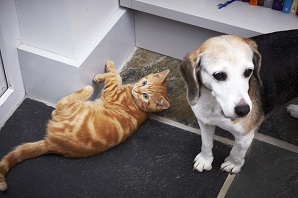
Q: My dog is normally well behaved, but when he's left in the car while I go shopping, he barks at passers-by. Why is he doing this?
A: We often use the car to take our dogs for a walk, to the vet etc, so it can become an extension of a dog's perceived territory. Your dog feels safe when you're there, so he doesn't bark, but when you leave him in the car on his own, he feels the need to defend his territory from passers-by. I recommend getting a dog crate for the car and covering it with a blanket. This way, when you leave your dog on his own, he won't be able to see out. Give him a tasty chew, too, to keep him occupied. Alternatively, leave him at home when you go shopping. However, you should NEVER leave a dog in a car in hot weather. It is very dangerous and can be fatal and dogs should only be left in the car for a short period of time.
Inga MacKellar, animal behaviourist
How To Deal With Urinary Tract Infections In Dogs

Q: Our six-year-old dog has had three urinary tract infections in the past 18 months that clear up quickly with antibiotics. Is there a reason why she is getting so many?
A: The plumbing of a female dog does, unfortunately, lend itself to infections, so flushing it with lots of fluid helps to keep the urinary tract healthy. Add warm water to your dog's meals to boost moisture in her diet and provide a good-quality food to help bolster her immune system. You could consider having a urine sample analysed and X-rays taken if the condition continues.
Scott Miller, vet
Can't eat, won't eat? Why your pet may be off its food
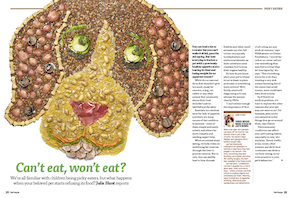
Julie Hunt reports on what steps to take when your beloved pet starts refusing its food. From the Petpeople magazine archive
You can lead a horse to water but you can't make it drink, goes the old saying. But how worrying is it when a pet with a previously healthy appetite starts leaving its food and losing weight for no apparent reason?
While the occasional dirty dish shouldn't give too much cause for concern, a dog, cat, rabbit or any other animal that constantly shuns their food shouldn't just be labelled a picky eater.
Anorexia is a medical term for lack of appetite, and there are many causes of the condition in animals - some of them simple and easily solved, and others far more complex and needing expert help.
When an animal stops eating, its body relies on mobilising fat reserves through the liver to provide calories. But in cats, this can swiftly lead to liver disease. Rabbits and other small animals can also fall victim very quickly to dehydration and undernourishment as their intestines need constant fuel to keep their organs healthy.
So how do you know when your pet's refusal to eat is down to plain pickiness or something more serious? Well, firstly, avoid self-diagnosing at home, advises the animal charity PDSA.
'I can't stress enough the importance of first of all ruling out any medical reasons,' says PDSA senior vet Elaine Pendlebury. 'I would far rather an owner call me over something they may feel is trivial than let time lapse by,' she says. 'There's nothing worse for a vet than treating a very sick animal knowing that if the owner had acted sooner, more could have been done to help.'
So if there's no medical problem, it's time to explore the other reasons why your pet may not want to eat. For example, pets can be very sensitive to the things that go on around them, says Elaine.
'Environmental conditions can affect your pet's eating habits, especially in cats,' she explains. 'Heavy traffic areas, noise, other animals and dirty food containers can deter a cat from eating, so try to be sensitive to your pet's behaviour.'
Warning signs
A vet for more than 40 years, Harvey Locke says that sometimes a loss of appetite is the only signal of an underlying medical condition. 'A dog with arthritis is easy to detect, but animals can look OK yet be very sick. Bitches who have been spayed will go through false pregnancies where their hormone levels can become abnormal. This kind of thing is easily treated, but it could be something far more serious such as slow-progressing kidney degeneration. We are also seeing an increase in sugar diabetes among dogs and cats because of a growing problem of obesity in animals.'
Once a medical problem has been ruled out, Harvey suggests that owners take a long look at the way they feed their pets.
'Some owners may worry if their animal doesn't eat two or three meals a day, like they do,' he says. 'This has come about with the domestication of animals. In the wild, a dog would eat only when it had made a kill, which would be every two to three days. Dogs are cunning animals too, and they will become fussy if they know that if they hold off long enough, they will get a bit of fillet steak. Believe me, no dog will starve itself, and will eat its own food when it's hungry.'
The situation is slightly different in cats and rabbits, says Harvey, who is also president of the British Veterinary Association. 'If a cat goes too long without food, it can suffer liver failure. Rabbits can suffer gut stasis, where the intestines stop moving and become blocked. Rabbits are also natural grazers, and if they stop eating, they can develop severe dental problems.' He advises owners to get into good feeding habits and consult their vet for any nutritional advice.
Other ailments such as worms, dental problems, infections and blockages in the throat or intestinal tract can all be ruled out by your vet, first with a simple physical examination and then, if necessary, an X-ray or ultrasound scan. And animals respond well to antibiotics and other treatment if an illness is caught in time.
Stressed out
Stress is another factor. Moving house or the arrival of a new baby or another animal can all interfere. In particular, dogs can experience a loss in appetite when grieving. 'Dogs get very attached to people and other animals, and when they have lost a companion, it can affect their behaviour and mood, which has a knock-on effect on their eating,' says Elaine.
On a less emotional level, pets quickly get a taste for human food, which can make their own dish seem far less appealing. 'I treated a dog whose owner fed it titbits of pizza until that's all it wanted to eat, but owners doing this are making a rod for their own back,'says Elaine.
'A dog or a cat may wait patiently for anything to 'fall' from the dining room table, but once they realise they are not going to get anything, they wander back to their food dishes.'
Changes in the weather can also cause a decrease in appetite, and it is common for pets to be less active in the summer months.
A sudden change to a pet's diet can be another problem, while certain foods can cause irritation. Fatty or greasy foods may cause gas and cramping and lead to a loss in appetite. Some animals can even be allergic to some proteins in pet foods such as chicken, beef, wheat, corn or soy.
Even if your pet's loss of appetite is not caused by a medical problem, a sustained period of not eating may lead to serious medical trouble.
Elaine advises a common-sense approach by owners. 'Animals pick up on a lot of fuss and it usually makes them even more reluctant to eat,' she says. 'Try to keep a cool head. First, seek a vet's opinion, then try to glean an understanding, through trial and error, of your pet's likes and dislikes when it comes to feeding.'
Case studies
Three socks were stuck in Leo's bowel
When one-year-old Labrador Leo went off his food for the second time in just a few months, his owners Dean Redden and Georgina Short quickly sought help.
Leo had previously undergone an operation to remove a meat bone that had lodged in his rectum. This time, something else was blocking Leo's bowel, and after life-saving surgery, the item was revealed to be three socks!
Leo had pica - a behaviour normal in puppies but a risk in adult pets, most commonly dogs - where animals use their mouth to explore objects but mistakenly eat them. Warning signs include loss of appetite, vomiting, abdominal pain, restlessness and dehydration.
My rabbits are anorexic
For the past three years, Janet Warnes' bunnies Prince, a seven-year-old Dutch, and Tia, a four-year-old cross, have suffered with a recurring anorexia problem that causes them to suddenly stop eating and become underweight, withdrawn and lethargic.
Although anorexia is common in rabbits and is usually caused by stress, Janet's vet can't say why her rabbits repeatedly fall victim to the condition - usually every three months. 'I put it down to the stress of living on a busy main road,' says Janet.
My kitten was infested with worms
Samantha Plant expected the usual teething problems when she brought home Sammy and Rolo, two eight-week-old kittens. But she couldn't have imagined that one would be fighting for its life a week later.
Rolo was off his food, and alarm bells started ringing when Sam found him collapsed in his litter tray. He had a severe worm infestation, which had left him with internal bleeding.
'The vet told us the chances of Rolo surviving were very slim,' says Sam. 'He looked so limp and lifeless that I really thought there was no way back for him.'
Rolo was dewormed, given strong medication and put on a high-calorie diet. Against all the odds, he began to recover.
PDSA senior vet Tim Browning says: 'There are 2.5 million unwormed cats in the UK. Worming and other preventive care is essential to keep pets fit and healthy.'
One-minute guide to... Separation anxiety
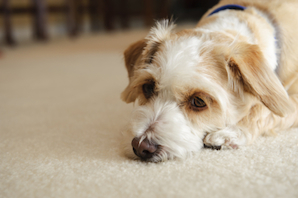
Many people are now returning to work after time at home over the festive period - but dog owners could find that their pet finds the long periods alone traumatic, resulting in problematic behaviour that needs to be tackled. Inga MacKellar explains all. From the Petpeople magazine archive
What is separation anxiety?
Separation anxiety is commonly seen in dogs, which are social animals. When left alone, some dogs can become destructive, poo indoors, excessively salivate, pant and pace, or bark and howl. This can occur for a variety of reasons, such as boredom, a lack of house training or because they have been stimulated or frightened by something outside. However, it can be due to anxiety at being separated from their owner.
Why does it occur?
It occurs with dogs that are used to having human company and can't cope with the solitude and separation if left alone. It can affect any breed and at any age, but typically occurs in dogs that are over-attached to the owner, often following them around the house - even to the bathroom. Rescue dogs can be susceptible to this problem as new owners often take a couple of weeks off work to help the dog settle in. The owners spend all their time giving the dog lots of attention and then, suddenly, the situation and routines are totally changed when the owners return to work and the dog can't cope. Even dogs that have been owned from a puppy can develop separation problems, particularly if they are owned by and spend all their time with one person.
Things to try
Many people mistakenly think that getting another dog will help, but it rarely does, as the problem is due to the owner/dog relationship. To prevent serious separation problems developing, dogs need to be trained to get them used to being periodically separated from their owner while he or she is at home. Dog gates are useful, as they enable the dog to be physically separated from, but still see, the owner. Over time, the room door can be gradually closed so that the dog gets used to being separated from its owner behind a solid door. Leaving a radio/TV on or a recording of the owner's voice may also help. There are also a number of 'calming' products available, such as Adaptil, Zylkene and Serene-Um. If the dog has soiled indoors or been destructive when left alone, it must never be told off as this may increase its anxiety.
If it gets very serious:
Some dogs can become so distressed that they may cause damage to themselves, or to doors and window frames, as they try to follow their owner out of the house. In this case, veterinary advice should be sought for a referral to a qualified behaviourist. In some instances, drug treatments may be necessary.
Does your cat need more litter trays?

Q: I have three cats and they have one litter tray between them, but my vet has said that I should have more trays. Why is this?
A: When cats defecate outdoors, they normally urinate and excrete in separate locations. I usually recommend one tray per cat, plus one extra. Not providing enough trays can lead to house-soiling problems. However, some cats are happy to share litter facilities. You need to provide whatever suits your cats best and consider your circumstances, such as whether the cats also have the opportunity to 'go' outdoors.
Inga MacKellar, animal behaviourist
Controlling your dog's barking

Q: My dog loves people, but she constantly barks at the postman and delivery people. Why might she be doing this?
A: This is quite a common problem with dogs. As dogs are pack animals, they have a very strong sense of territory. The most common reason why dogs bark at people who come near their territory is to make them go away. And, in most cases, the people do go away, for example the postman or newspaper boy or girl, therefore the dog believes that this is due to their barking. This perceived success increases the dog's confidence to bark at the next potential intruder and so the barking escalates. If this pattern of behaviour is allowed to continue over a period of time, it can become an automatic reaction.
Inga MacKellar, animal behaviourist
Neutering your pedigree cat - when's the right time?

Q: We recently bought a male British Shorthair cat. We've always had our kittens spayed or neutered by around six months old, but we've been told that pedigree cats need to develop all their pedigree characteristics first. Is this true?
A: Breeders will have all sorts of advice when it comes to treating their kittens, but one thing that obviously goes against 'breeding' is to neuter. Your British Shorthair should reach maturity by six months and will continue to grow even if you castrate him at that time. In my opinion, the benefits of neutering outweigh any potential concerns and male cats of around that age can begin to stray, fight and scent mark - not attributes that many owners will desire for a house cat. Take your British Shorthair to the vet at six months and decide together what is best for him.
Scott Miller, vet
Moving house - helping your pet to cope

Q: I've had my two nine-year-old feral cats since they were kittens. I've downsized from a house with eight acres of land, where the cats hunted mice. Since I moved, the male cat has turned on me. How can I master him?
A: Your cats have moved from a property where it sounds as if they lived a semi-feral existence to a much more restricted environment. They were used to hunting and I suspect the male cat is displaying predatory aggression towards you. Ensure he has lots of toys available upon which he can focus this behaviour. Have wine corks strategically located and in your pockets so that, should you think he is about to run at you, you can quickly roll a cork on the ground for him to chase instead of leaping at you. Don't underestimate the injuries a cat can inflict and seek professional help if this behaviour continues.
Inga MacKellar, animal behaviourist
How to make a tasty Christmas dinner for your dog
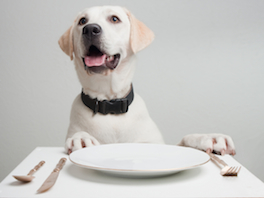
We've invited writer Elaine Everest, author of hit book Canine Cuisine (£8.99, How To Books) to give us this extra-special recipe for a festive meal for your dog. Hope your dog likes it!
Ingredients
- One mug of brown rice
- One beef stock cube
- Half a small butternut squash
- Four large carrots
- One head of broccoli
- A small bunch of fresh parsley
- One tray of minced turkey
- A small carton of chicken liver
- Two cloves of garlic
- One mug of wholemeal flour
- One mug of oatmeal
- Four eggs
- Half a mug of vegetable oil
Method
- Heat your oven to 190°C or gas mark 5.
- Put the brown rice into a pan with the stock cube and cover with boiling water. Bring to the boil and simmer until the rice is cooked but not too soft.
- Meanwhile wash the vegetables. Peel the butternut squash and chop all vegetables into even-sized pieces and place into a food processor. Blitz until the vegetables resemble fine breadcrumbs before adding the parsley for a final five-second blitz.
- Place the finely chopped vegetables into a large mixing bowl along with the wholemeal flour and oatmeal. Mix together.
- Next, place the minced beef and the ox liver into the food processor and blitz along with the garlic cloves until you have a smooth paste. Add the four eggs and mix well together for several seconds.
- Add this mix to the bowl and stir together well. At this point, stir in the cooked rice and add the vegetable oil until you have a mixture that is not too runny. It is not essential to use all the oil. If the mix becomes too liquid, add a little more oatmeal to stiffen.
- Pour into a greased baking tin or two round cake tins and place into the centre of the oven. The new-style silicon bakeware is ideal for this recipe as the cake will slide away from the container with ease. Bake for 45 minutes or until a skewer comes out clean when slid into the centre of the cake. Turn out onto a cooling rack and leave to cool.
- After feeding your dog a portion of his own cake, allow his meal to go down for an hour or so before enjoying a brisk Christmas Day walk with the whole family.
Happy Christmas!
If you have a recipe you would like to share, just comment below.
Five perfect Christmas gifts for your pet
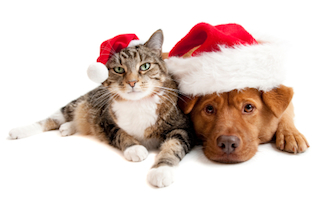
Still stuck on what to get your pet for Christmas? Try one of these!
The Meteorlight K-9 LED Ball (£12.99) is perfect for those early morning or late afternoon winter walks. The durable, water-resistant tennis-ball-sized exercise toy gives off a steady glow, comes in four colours and even floats! Most importantly, it brings an end to those lost hours spent hacking through brambles on dark January days searching for your dog's lost ball.
The ever-popular Pet Friendly Places to Stay (£9.99) by AA Publishing is back for another year. Fully updated, the 496-page guide features more than 1,000 AA-inspected hotels, B&Bs and campsites in Britain and Ireland. It's the detail that makes this guide so good, such as offering additional information on everything from exercise areas to food to whether your pet can stay in the room unattended.
Or if you'd prefer a charitable gift, the RSPCA has a lost pet bed and breakfast scheme. Just £10 pays for one night's boarding costs for a rescued animal at one of their centres, as well as a good meal. The recipient receives a personalised printed card or e-card, and the knowledge that a lost cat or dog will be having a very merry Christmas on them.
Silly, but fun, the Jolly Moggy Micro Mouse from the Cats Protection shop (£9.99) will keep your cat occupied for... well, however mischievous (or intelligent) your beloved puss is. The remote-controlled mini mouse racer is just 70mm long, runs on two AA batteries and should keep the whole family entertained well into the new year.
The Catit® Design Senses Massage Center (£11.79) offers your cat an oasis of calm and relaxation with the ultimate pampering and massage experience. It has a variety of sculpted textures and surfaces, the acu-pressure mat provides pressure-point paw massage, and the body stroke groomers stimulate face and back glands. Catnip can be added to heighten the sensory experience, while the gum stimulator massages and cleans teeth and gums.
What do you think the year's hit pet gift will be? Let us know by commenting below.


